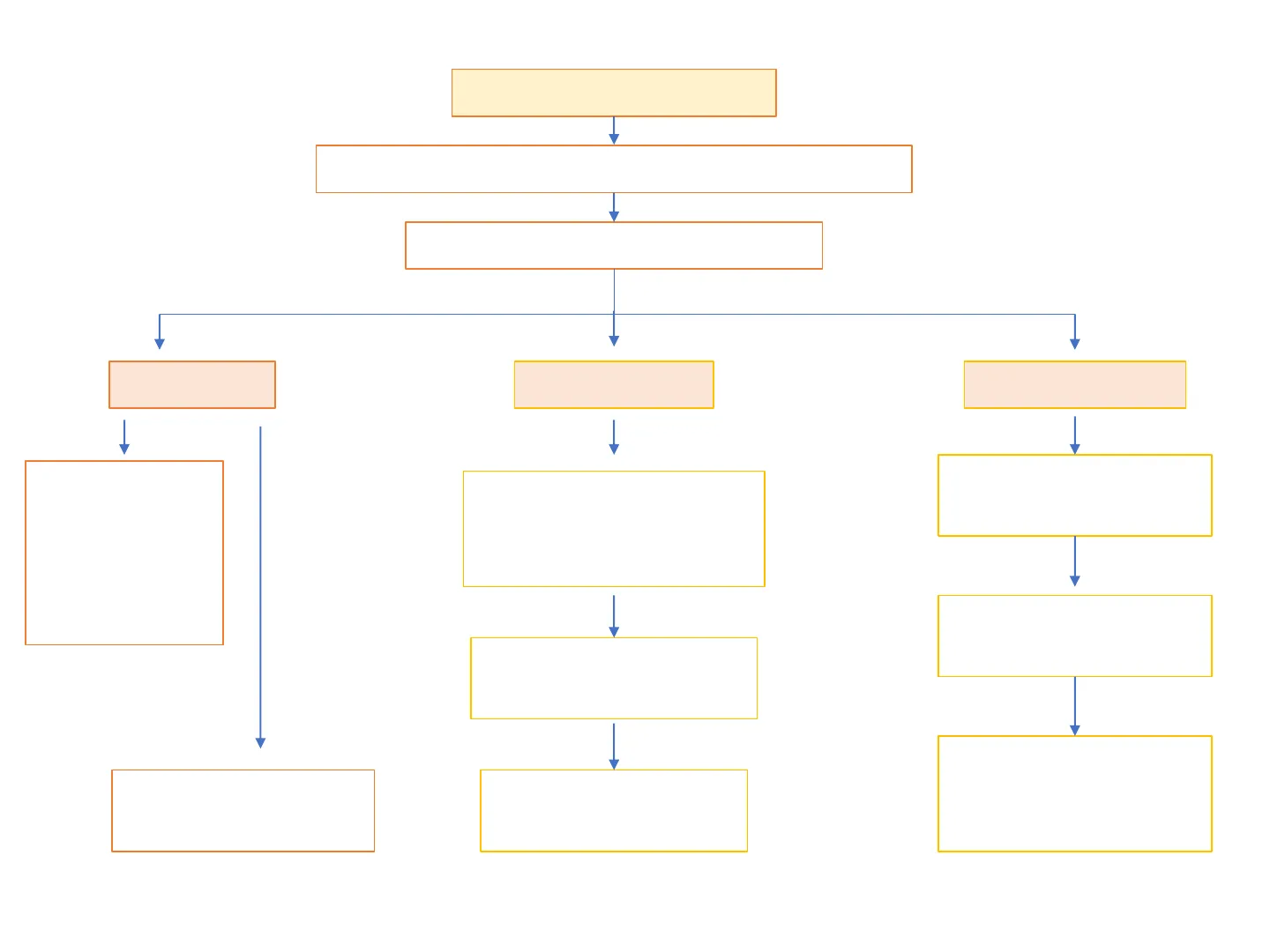Nutrition and Metabolism: Energy Balance and Appetite Regulation
Slides from University about Nutrition and Metabolism. The Pdf explores how nutrients are absorbed and used for energy and building blocks, discussing carbohydrates, lipids, proteins, vitamins, and minerals. The Presentation, a Biology document for University students, also covers appetite regulation and factors influencing metabolism and body temperature.
See more44 Pages


Unlock the full PDF for free
Sign up to get full access to the document and start transforming it with AI.
Preview
Nutrition and Metabolism Overview
Nutrition and
metabolism
chapter 26Nutrition and metabolism
Dietary nutrients are broken down and absorbed
For building blocks and for energy
Nutrition Fundamentals
Key Questions in Nutrition
Nutrition
1
What are
carbohydrates,
lipids and
proteins used
for?
Metabolism
How is metabolism of
carbohydrates, lipids
and proteins?
What are the
metabolic states?
What are vitamins
and minerals for?
What is the function
of the liver?
Energy balance
1
How is food intake
regulated?
What factors affect
the metabolic rate?
How is the body
temperature
regulated?
Outline of Topics
- Nutrition
- Carbohydrate metabolism
- Lipid and protein metabolism
- Metabolic states and metabolic rates
- Body heat and thermoregulation
Appetite Regulation
Appetite Regulators
Appetite
- Short-term regulators of appetite
- Ghrelin
- Peptide YY (PYY)
- Cholecystokinin (CCK)
- Amylin
- Long term regulators of appetite
- Leptin
- insulin
Arcuate Nucleus and Appetite
Appetite regulation
- Arcuate nucleus of
hypothalamus - neural networks
involved in hunger
- neuropeptide Y (NPY)
- Gherlin stimulates
neuropeptide Y
secretion - Insulin, PYY, and leptin
inhibit it
- melanocortin
- Leptin stimulates
melanocortin secretion
Satiety
Hunger
Arcuate nucleus
of hypothalamus
Melano-
cortin-
secreting
neurons
Forebrain
NPY-
secreting
neurons
Key
-> Stimulatory
effect
- Inhibitory
effect
Ghrelin
PYY
CCK
Insulin
Leptin
Stomach
Large
intestine
Small
intestine
Pancreas
Adipose tissue
Nutrients and Dietary Guidelines
Types of Nutrients
Nutrients
. Nutrients are chemicals in food that cells use for
growth, maintenance and repair
- Nutrients include:
Water
Carbohydrates
Lipids
Proteins
Minerals
Vitamins
Dietary Reference Intakes
Dietary Reference Intakes (DRIs)
Recommended Daily Allowances (RDA)
. Safe estimate of daily intake that would meet the
nutritional needs of most healthy people
Adequate Intake (AI)
. Used instead of RDA if less certainty established for
needs
Essential nutrients cannot be synthesized in body
. Minerals, most vitamins, eight amino acids, and one to
three of the fatty acids must be consumed in diet
Carbohydrates
Carbohydrate Structure and Function
Carbohydrates
- Carbohydrate Structure and Function
- Sugars function as:
- Structural components of other molecules including
nucleic acids, glycoproteins, glycolipids, ATP, and related
nucleotides (GTP, cAMP) - Hypoglycemia-deficiency of blood glucose
- Glycemic index (GI)
Carbohydrate Classification
Carbohydrates
- Monosaccharides- 1 unit
•
Glucose
- Fructose
- galactose
- Disaccharides- 2 units
- Sucrose
- lactose
- Polysaccharides- many units
- Starch
- Cellulose (fiber)
Fibers
Fibers
•
Fibrous material that resists
digestion
- Cellulose, pectin, gums, and lignins
- Water soluble fiber
- pectin
- Water insoluble fiber
- Cellulose
- Hemicellulose
- lignin
Lipids
Lipid Characteristics and Sources
Lipids
- Hydrophobic
- Compact energy substance
- Sources
- Saturated fats
- Animal origin-meat, egg yolks, dairy products
- Some in coconut and palm oils
- Unsaturated fats
- Found in nuts, seeds, and most vegetable oils
- Cholesterol
- Found in egg yolks, cream, shellfish, organ meats, and other
meats
Serum Lipoproteins
Serum lipoproteins
. There are four classes of lipoproteins:
- Chylomicrons - transport dietary lipids to adipose
tissue - Very-low-density lipoproteins (VLDLs) - transport
triglycerides from hepatocytes to adipocytes - Low-density lipoproteins (LDLs) - carry about 75% of
the total cholesterol in blood and deliver it to cells - High-density lipoproteins (HDLs) - remove excess
cholesterol from body cells and the blood and
transport it to the liver for elimination
Proteins
Protein Functions and Nutritional Value
Proteins
- Proteins have a wide variety of functions
- Muscle contraction
- Motility of cilia and flagella
- Structural components
- Buffer pH of body fluids
- Contribute to resting membrane potentials of all cells
- Protein RDA is 46 to 56 g/day
- Nutritional value
- 8 essential amino acids
- 12 inessential amino acids
Minerals and Vitamins
Minerals
Minerals
. Inorganic elements that plants extract from soil or
water and introduce into the food web
. Not used as fuel
- Major minerals
- Calcium, phosphorus
- Trace minerals
- Iron, lodine
Vitamins
Vitamins
. Small dietary organic compounds that are
necessary for metabolism
- Water-soluble vitamins
- Vitamin C, B vitamins
- Fat-soluble vitamins
- Vitamin A, D, K, E
- Disorders
- Vitamin A deficiency
Metabolism Outline
Metabolism Topics
Outline
- Nutrition
- Carbohydrate metabolism
- Lipid and protein metabolism
- Metabolic states and metabolic rates
- Body heat and thermoregulation
Glucose Metabolism
Oxidative Carbohydrate Metabolism
Glucose metabolism
. Oxidative carbohydrate metabolism is glucose
catabolism
C6H1206 + 6 02 -> 6 CO2 + 6 H O+ ATP (energy)
Major pathways
- Glycolysis
- Anaerobic fermentation
- Aerobic respiration
- Electron carriers
- FAD + 2 H -> FADH2
- NAD+ + 2 H -> NADH + H+
Glycolysis Process
Glycolysis
- Process whereby a 6-
carbon glucose
molecule is split into
two 3-carbon
molecules of pyruvic
acid - Net products
- 2 pyruvate
- ATP
- NADH +2H
Key
Glucose
Carbon atoms
ATP
·
Phosphate
groups
1
Phosphorylation
ADP
Glucose 6-phosphate
Glycogen
Fat
Fructose 6-phosphate
ATP
2 Priming
ADP
Fructose 1,6-diphosphate
3 Cleavage
2 PGAL
2 NAD+
2 P
2 NADH + 2 H+
4
Oxidation
2
2
ADP
2 H20+
>2 ATP
2
5
Dephosphorylation
2
ADP
2.
ATP
2
2 pyruvate
Anaerobic Fermentation
Anaerobic fermentation
- Absence of oxygen
- Pyruvic acid is reduced
to lactic acid - NADH transfers
electrons to lactate - Regenerate NAD+
- Glycolysis can continue
Key
Glucose
Carbon atoms
ATP
Phosphate
groups
1 Phosphorylation
ADP
Glucose 6-phosphate
Glycogen
Fat
Fructose 6-phosphate
ATP
2 Priming
ADP
Fructose 1,6-diphosphate
3 Cleavage
2 PGAL
2 NAD+
2 P
2 NADH + 2 H+
4 Oxidation
2
2 (ADP
2 H20+
2 ATP
2
5 Dephosphorylation
2 (ADP
>2 ATP
2
pyruvate
2 NADH + 2 H+
2 NAD+
No O2 used
O2 required
2 0
2 lactate
Anaerobic fermentation
Aerobic respiration
Aerobic Respiration
Aerobic respiration
- Most ATP is generated in mitochondria, which
requires oxygen as final electron acceptor - In the presence of oxygen, pyruvate enters the
mitochondria and is oxidized by aerobic respiration - Occurs in two principal steps
- Matrix reactions: their controlling enzymes are in the
fluid of the mitochondrial matrix - Membrane reactions: their controlling enzymes are
bound to the membranes of the mitochondrial cristae
Aerobic Respiration Steps
Glucose metabolism- aerobic
respiration
- The oxidation of glucose to produce ATP is cellular
respiration - Four sets of reactions are involved:
- Glycolysis
- Formation of acetyl coenzyme A
- Citric acid cycle
- Electron transport chain reactions
ATP Production Pathways
Electrons
via NADH
Electrons
via NADH
Electrons
via NADH
and FADH2
GLYCOLYSIS
PYRUVATE
OXIDATION
OXIDATIVE
PHOSPHORYLATION
Glucose
Pyruvate
Acetyl CoA
CITRIC
ACID
CYCLE
(Electron transport
and chemiosmosis)
CYTOSOL
MITOCHONDRION
ATP
ATP
Substrate-level
Substrate-level
ATP
Oxidative
Formation of Acetyl Coenzyme A
2- Formation of acetyl
coenzyme A
- CO2 removed from pyruvate
to make a C compound - Convert C2
compound to an
acetyl group (acetic acid) - NAD+ removes hydrogen
atoms from the C2 compound - Acetyl group binds to
coenzyme A - acetyl-CoA is delivered to
citric acid cycle
Pyruvate (C3)
6
CO2
NAD+
7
NADH + H+
Acetyl group (C2)
8
Acetyl-CoA
Coenzyme A
H20
Citric Acid Cycle
3- citric acid cycle
- Each acetyl group
oxidized produces - 1 ATP
- 1 FADH2
- 2 CO2
- 3 NADH
- The NADH and FADH,
relay electrons
extracted from food to
the electron transport
chain
Coenzyme A
H20
9
Citric acid (C6)
Oxaloacetic acid (C4)
10
120
NADH + H+
(C6)
18
Citric
acid
cycle
H20-
11
NADH + H+
(C4)
12
CO2
17
(C5)
H2O
NAD+
13
Occurs in
mitochondrial
matrix
NADH + H+
16
FADH 2
(C4)
CO2
FAD
(C4)
Pi
15
GTP
GDP
ADP)
ATP
NAD+
NAD+
(C4)
14
Electron Transport Chain
4- Electron transport chain
- The electron transport chain is a series of electron
carriers in the mitochondria
Each carrier in the chain is reduced as it picks up
electrons and oxidized as it gives up electrons
Exergonic reactions release energy used to form
ATP
Electrons depleted of energy are delivered to
oxygen as final electron acceptor
Chemiosmotic Mechanisms of ATP Synthesis
Chemiosmotic Mechanisms of ATP
Synthesis
- Electron transfer in the ETC
causes proteins to pump H+
to the intermembrane
space - H+ then moves back across
the membrane, passing
through channels in ATP
synthase - ATP synthase uses the
exergonic flow of H+ to
drive phosphorylation of
ATP
Intermembrane
space
Matrix-
Cristae
Inner membrane
Outer membrane
6 H+
NADH + H+
NAD+
1/2 O2 + 2 H+
H2O
Matrix
A
2.5 ADP + 2.5 P
2e-
2e-
CoQ
Inner
membrane
Enzyme
complex
1
Enzyme
complex
2
Enzyme
complex
3
ATP
synthase
Cyt c
Intermembrane-
space
2 H+
2 H+
2 H+
Outer
membrane
M
2.5 ATP
Overview of ATP Production
Overview of ATP production
Glucose
Glycolysis
2 ATP
(net)
2 NADH + 2 H+
2 pyruvate
Cytosol
Mitochondria
2 NADH + 2 H+
CO2
6 NADH + 6 H+
Citric acid
cycle
2
ATP
2 FADH2
3
ATP
Electron-transport
chain
25
ATP
Total 32
ATP
O2
H2O
Glycogen Metabolism
Glycogen Metabolism
- Glycogenesis
- Synthesis of glycogen
- Glycogenolysis
- Hydrolysis of glycogen
- Gluconeogenesis
- Synthesis of glucose
from noncarbohydrates,
such as glycerol and
amino acids
Blood
glucose
Extracellular
Intracellular
Glucose
6-phosphatase
(in liver, kidney,
and intestinal cells)
Hexokinase
(in all cells)
Glucose 6-phosphate
P
Glycogen
synthase
Key
- Glycogenesis
Glucose
1-phosphate
Glycogen
- Glycogenolysis
Pİ
Glycogen
phosphorylase
Glycolysis
Major Pathways of Glucose Storage and Use
Metabolism Outline Continued
Metabolism Topics Continued
Outline
- Nutrition
- Carbohydrate metabolism
- Lipid and protein metabolism
- Metabolic states and metabolic rates
- Body heat and thermoregulation
Lipid Metabolism
Lipogenesis and Lipolysis
Lipid metabolism
- Lipogenesis
- Synthesis of fat from
other types of
molecules - Lipolysis
- Breaking down fat for
fuel - Glycerol
- Fatty acids
Glucose
>
Glucose 6-phosphate
Glycerol
PGAL
Stored
triglycerides
Fatty acids
Glycerol
Beta oxidation
Pyruvate
New
triglycerides
Acetyl groups
Fatty
acids
Acetyl-CoA
Ketone bodies
ß-hydroxybutyric acid
Acetoacetic acid
Acetone
Citric
acid
cycle
Key
- Lipogenesis
- Lipolysis
Pathways of Lipolysis and Lipogenesis in
Relation to Glycolysis and the Citric Acid Cycle
Protein Metabolism
Amino Acid Pool and Reactions
Protein metabolism
- Amino acid pool
- Converted to other
aa. - Converted to
glucose, fat, fuel - Chemical reactions
- Deamination
- Amination
- transamination
Glucose
Pyruvate
Protein
->
-
Amino
acids
Keto
acids
Acetyl-CoA
Citric
acid
cycle
-NH2
a-ketoglutaric
acid
Urea
cycle
.CO2
NH3
Glutamic
acid
Urea
Urine
Liver Functions
Liver's Role in Metabolism
Liver Functions in Metabolism
- Liver plays a wide
variety of roles in
carbohydrate, lipid, and
protein metabolism - Hepatitis
- inflammation of the
liver is caused viruses
(HVA to HVF) - Cirrhosis
- Irreversible
inflammatory liver
disease
Liver With Cirrhosis